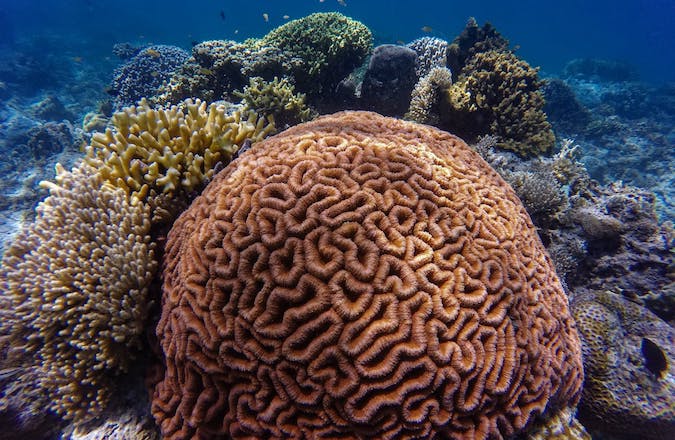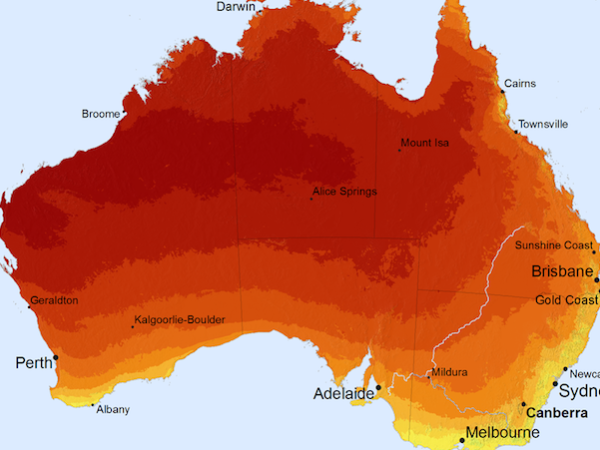Coral reefs are incredibly diverse ecosystems, providing shelter, food, and breeding grounds for countless species of fish, invertebrates, and other marine organisms. They also act as natural barriers, reducing wave energy and protecting shorelines from erosion, storm surges, and flooding, as well as playing a role in the carbon cycle by absorbing carbon dioxide from the water, helping to regulate the climate. Unfortunately, it has been estimated by scientists that half of the Earth’s coral reefs have been destroyed in the past three decades.
There are over 6,000 species of coral recognised across the world, split into two categories, soft corals and hard corals. Hard corals form the structural framework of coral reefs, creating limestone skeletons, such as staghorn coral and brain coral. Soft corals do not build reefs, but grow amongst them, having flexible treelike structures, such as sea fans and sea feathers.
Figure 1: Image of a coral reef. [2]
Coral Music: The Soundtrack of a Healthy Reef
Reefs are not only colourful (when healthy), but full of sounds, and it is this vast array of noises that is the focus of a new study by scientists at the Woods Hole Oceanographic Institution (WHOI). The research team made sound recordings of a healthy coral reef and found that a healthy coral reef is noisy, full of the croaks, purrs, and grunts of various fishes and the crackling of snapping shrimp. [1]
A reef that has experienced coral bleaching (bleaching events happen where the polyps expel the zooxanthellae, the genus that lives within their tissue and is the reason for their bright colours, in response to stress such as high water temperature or toxins) or has been degraded by human impacts or disease is unable to support as many species, resulting in a quieter and less diverse soundscape. The researchers demonstrated that coral larvae use this symphony of sounds to help them determine where they should live and grow. Research also showed that by broadcasting healthy reef noises at degraded reefs, settlings rates became much higher.
The Urgent Case for Coral Restoration
Researchers at WHOI then came up with the idea to record long recordings of a healthy coral reef and test playing it back to a less healthy coral reef, in the hopes that it might improve and grow, attracting more coral larvae to settle at the struggling reef rather than already blooming reefs. As coral become immobile as adults, it is important to play the recordings to them as larvae so they can choose where they settle (as directed by the coral sounds playing). The research team has hope that their work could be used to aid coral restoration. For example, coral reef soundscapes could help increase larvae settlement rates in nurseries or be broadcast at wild reefs to improve or maintain existing populations of corals.
237 species of coral are classified as endangered currently; therefore, it is vital that we restore as much of the damaged/dead coral reefs as possible. This will increase biodiversity, bring back vital ecosystems within our oceans and help to fight climate change and global warming by absorbing carbon dioxide and in turn, cooling our oceans to a healthy temperature.
About Pager Power
Pager Power undertakes technical assessments for developers of renewable energy projects and tall buildings worldwide. For more information about what we do, please get in touch.
References
[1] https://www.ecowatch.com/healthy-coral-reef-sounds-restoration.html
[2] Image of a coral reef. Image accessed on 08/07/25. Photo credit: John Cahil Rom. Available at: https://www.pexels.com/photo/coral-reef-underwater-3820941/




